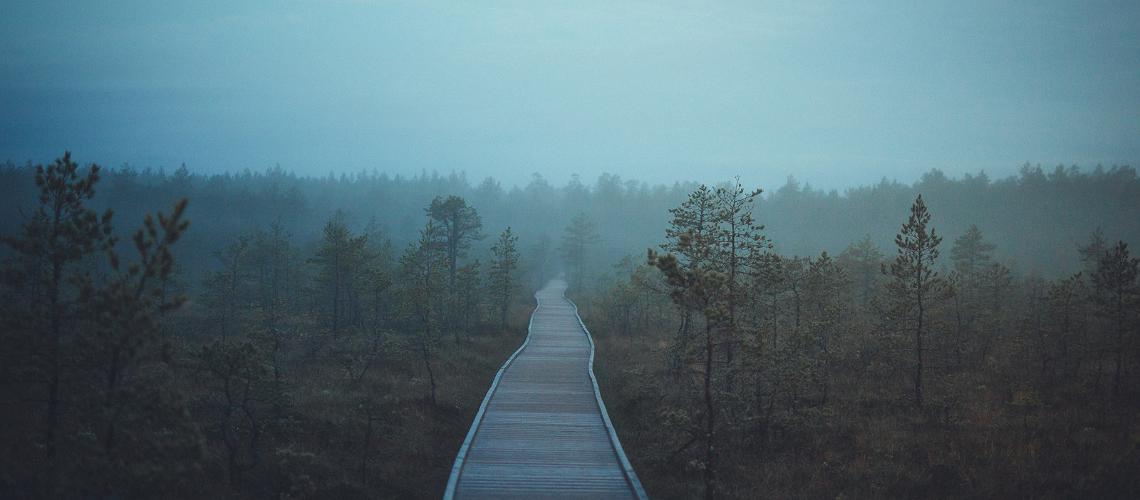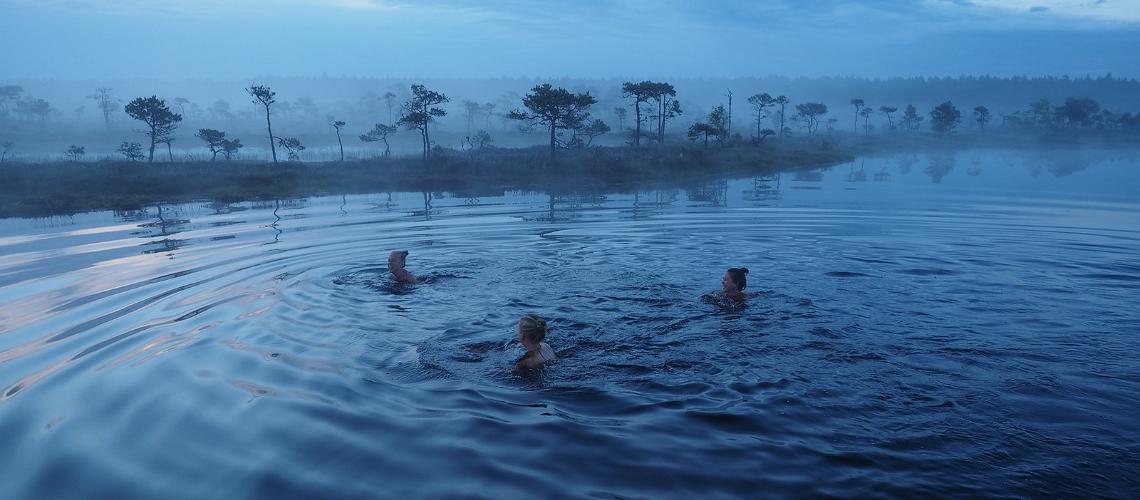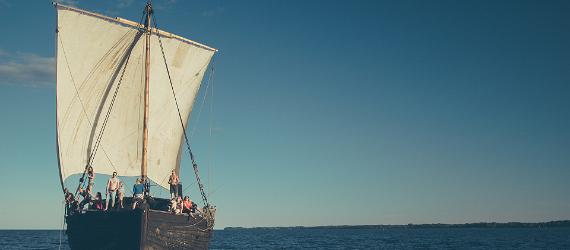Mire landscapes stretching to the horizon and autumnal colours in bogs make up a scene rarely encountered elsewhere in the world. Bogs and mires are important in Estonian folklore, and they are seen as places of of mystery and peace. They cover fifth of the mainland area in Estonia, of which bogs are the most ancient, stretching back to over 10,000 years. The flora and fauna in these areas is like nowhere else, with many unique animal and plant species present. About a quarter of Estonia's plants grow only in mires, among them many relict species from the Ice Age.

Early morning walk in the bog
The mist over green trees and dark pools of water is a sight worth capturing in complete silence.
Photo by: Siiri Kumari
Ancient Estonian landscape
The soil rises like a dough and the peat moss turns into peat as it decays, with most Estonian bogs having a peat layer 3-6 metres thick. Deepest peat layer is found nearby Estonia's highest hill Suur Munamägi, where the peat layer is about 17 metres thick. Estonian mires have accumulated an immense amount of peat – around 1,600 tons per capita. A significant amount of this peat is exported, while the rest is used as widely as from energetics to cosmetics industries. Locals' favourite mires in North Estonia are Lahemaa and Viru bogs, and Soomaa and Matsalu in South Estonia. Matsalu National Park is the most important stopover and feeding site for migratory birds on their journey between the Arctic and western Europe. The hillocks of Karula National Park in southern Estonia were created by the uneven melting of continental ice. These hillocks, covered with forests, fields and meadows, conceal around 40 lakes. Bogs have a special place in Estonian folklore, being the setting for supernatural events in local stories. If you long for a truly inspiring experience, watch the sun rise over a misty bog and you will soon realise why.
Jump on and in the water

A refreshing swim
Known as "living water", marsh water is rich in organic compounds and found to tighten and soften the skin.
Photo by: Kristjan Lust
Probably the funnest thing to do in an Estonian bog is to throw on your bog shoes and walk on the wobbly, wet landscape. Bog walking is a popular mode of hiking in Estonia and there are plenty of companies that offer bog-shoeing hikes all year round. Meanwhile, boardwalks take visitors on a voyage of discovery through mysterious bog landscapes. If you long for a truly memorable experience, get there early and watch the sun rise over a misty bog.
Find out how to get here, book your accommodation and nature activities today.


















